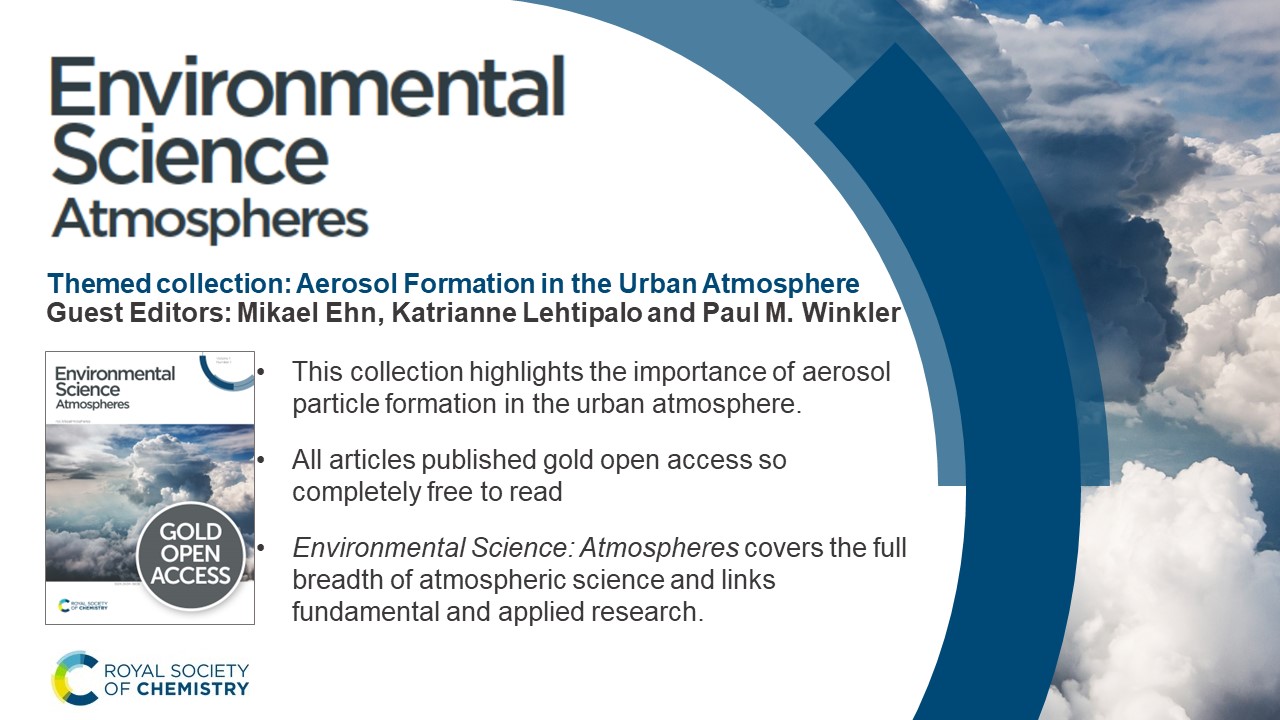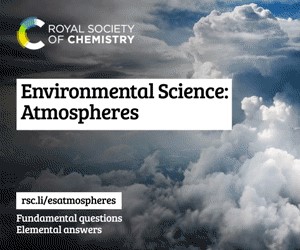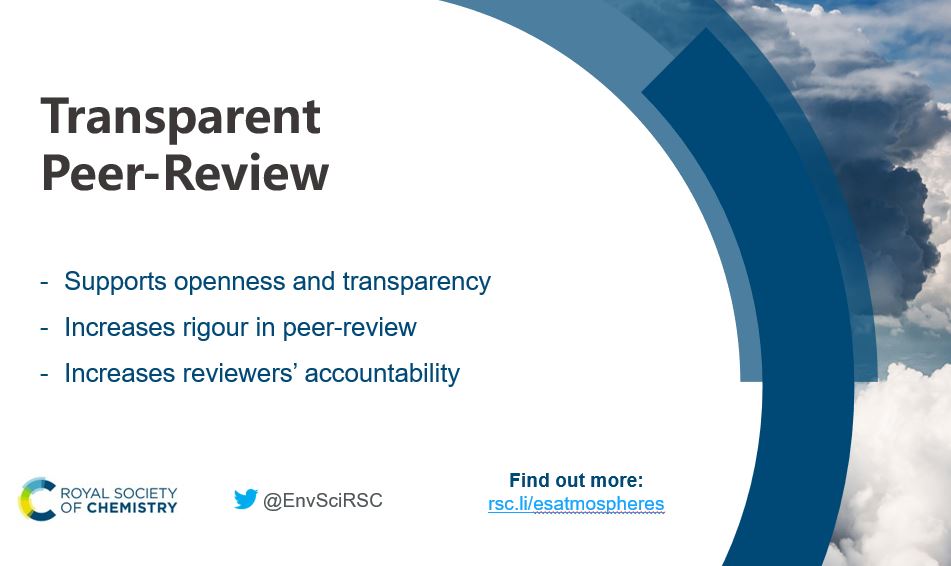We are delighted to announce that the Environmental Science: Atmospheres themed issue ‘Aerosol formation in the urban environment’ is now online.
Guest Edited by Professor Mikael Ehn (University of Helsinki), Professor Katrianne Lehtipalo (University of Helsinki) and Professor Paul M. Winkler (University of Vienna), this collection includes studies on new particle formation and growth mechanisms and rates, and the sources, transformations and chemical composition of aerosol precursor vapours, clusters, and particles.
Read the full issue online.
It includes:
Paper
The contribution of new particle formation and subsequent growth to haze formation
Markku Kulmala, Runlong Cai, Dominik Stolzenburg, Ying Zhou, Lubna Dada, Yishuo Guo, Chao Yan, Tuukka Petäjä, Jingkun Jiang and Veli-Matti Kerminenbc
Environ. Sci.: Atmos., 2022, 2, 352-361. DOI: 10.1039/D1EA00096A
Paper
A computationally efficient model to represent the chemistry, thermodynamics, and microphysics of secondary organic aerosols (simpleSOM): model development and application to α-pinene SOA
Shantanu H. Jathar, Christopher D. Cappa, Yicong He, Jeffrey R. Pierce, Wayne Chuang, Kelsey R. Bilsback, John H. Seinfeld, Rahul A. Zaverie and Manish Shrivastavae
Environ. Sci.: Atmos., 2021, 1, 372-394. DOI: 10.1039/D1EA00014D
Paper
Observed coupling between air mass history, secondary growth of nucleation mode particles and aerosol pollution levels in Beijing
S. Hakala, V. Vakkari, F. Bianchi, L. Dada, C. Deng, K. R. Dällenbach, Y. Fu, J. Jiang, J. Kangasluoma, J. Kujansuu, Y. Liu, T. Petäjä, L. Wang, C. Yan, M. Kulmala and P. Paasonen
Environ. Sci.: Atmos., 2022, 2, 146-164. DOI: 10.1039/D1EA00089F
We hope you enjoy reading the articles!




